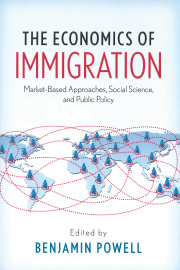We have much to celebrate on Oct. 24, World Development Information Day. Although hundreds of millions of people remain trapped in poverty around the globe, at no time in human history have as many people escaped extreme poverty as they have in recent years.
Forty-five years ago, the United Nations declared World Development Information Day to draw attention to development problems and the need for international cooperation to solve them. While problems and impediments to development remain, decentralized international cooperation and exchange have been eradicating poverty at unprecedented levels.
Poverty reduction in China alone is unprecedented in human history. According to the World Bank, in 1990, a mere generation ago, more than 90 percent of China’s people lived on less than $3.20 per day. Two-thirds of its people lived on less than $1.90 per day. The most recent figures are about 12 percent and two percent respectively. The total number of people living in extreme poverty declined by more than one billion, while the population grew by more than 200 million.
While China leads the world in poverty reduction, the story is similar elsewhere. In 1993 more than 80 percent of India’s population lived on less than $3.20 per day and 45 percent lived on less than $1.90. Those numbers have fallen to 60 percent and 21 percent in recent years.Even countries in sub-Saharan Africa, where poverty rates increased from the early 1990s through the early 2000s, have experienced improvements. The percentage of people living on less than $3.20 per day fell from 75 percent in 2002 to 62 percent recently. More extreme poverty has seen greater declines as the percentage living on less than $1.90 a day has declined from 53 percent to 20 percent.
For decades the United Nations, World Bank, and other governmental and international agencies have tried—with little success—to engineer development from the top down through aid programs. Some economists have criticized these efforts, maintaining that these programs often impede development by creating dependency, distorting market incentives, and entrenching corrupt dictators.
In contrast, decentralized market cooperation has promoted development. This is shown by the most recent update of the Economic Freedom of the World Annual Report (EFW), released last month. The index measures openness to decentralized market cooperation around the globe by looking at the size of government, protection of private property, soundness of money, freedom to trade internationally, and regulatory restrictions. Scores of academic studies have found that economic freedom is associated with economic development.
China, although far from a free-market ideal, has made some of the world’s greatest strides toward economic freedom. While China’s economic liberalization began under Deng Xiaoping in 1978, by 1990 it rated only 4.09 on the EFW’s 10-point scale. Since then, the score has improved 56.5 percent, the largest improvement in all of Asia.
Similarly, India began its economic reforms in 1991. Its economic freedom score has improved 38 percent since then. Even sub-Saharan Africa, with disasters like Zimbabwe, has improved its economic freedom by almost eight percent since 2000.
Liberalization alone is not the only factor contributing to poverty reduction. China’s measured liberalization understates its degree of market reform because it doesn’t account for the additional economic freedom in special enterprise zones. As the recent book China’s Great Migration has argued, the freedom of Chinese citizens to migrate to these enterprise zones has been a major contributor to the reduction in poverty in that country.
If citizens trapped in poverty around the globe had the freedom to migrate to more economically free and productive countries, much the way Chinese citizens can migrate from less-free to more-free areas within their country, even greater poverty reductions could be achieved.
On World Development Information Day we should appreciate the major successes the world has witnessed in global poverty reduction in recent years and recognize that these improvements have been largely driven by spontaneous market cooperation rather than intergovernmental aid programs.












